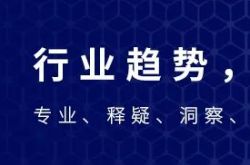Huawei's New MatePad Pro 12.2-inch with HarmonyOS 5: Revolutionizing Mobile Productivity
![]() 07/24 2025
07/24 2025
![]() 431
431
An IDC report reveals that in Q1 2025, Huawei's tablets led the market with a 34.5% share, demonstrating a significant rise in the realm of productivity tools. As HarmonyOS becomes ubiquitous across Huawei devices, this market performance underscores a shift in competition within the tablet industry, evolving from a singular focus on hardware performance to a multi-faceted battle encompassing user experience and scenario adaptability. 
Today, Huawei unveiled its flagship MatePad Pro 12.2-inch, equipped with HarmonyOS 5. This device has once again stirred up the industry, promising "PC-level productivity" – transcending the conventional path of "performance upgrades" to address the pain points of remote work, creative design, and mobile learning through the trifecta of hardware reconstruction, AI empowerment, and ecosystem integration. With a device weighing just 508g and 5.5mm thick, capable of seamlessly running desktop-grade applications like WPS, ZWCAD, and CapCut, a "scenario revolution" in productivity tools is underway. 
From screen to AI, from software to ecosystem, the MatePad Pro 12.2-inch offers a comprehensive overhaul of the productivity experience. 
The popularity of Huawei tablets among consumers is attributable to the continuous upgradation of hardware, enhancing the product experience, amplifying the advantages of tablets, and redefining the physical boundaries of "professional devices." For instance, the 12.2-inch dual-layer OLED SoftView screen, with its larger size and clarity, stands out uniquely in the current screen landscape, a testament to Huawei's advanced SoftView screen technology. 
Boasting a dual-layer tandem OLED structure, this screen offers a resolution of 2800×1840 (274 ppi), a refresh rate of 144Hz, and a peak brightness of 2000 nits. It not only reduces power consumption by 30% but also eliminates reflective interference entirely. Designers, for example, can modify drawings outdoors without glare, akin to drawing on paper. 
Measuring 182.53 x 271.25 x 5.5mm, the MatePad Pro 12.2-inch retains the lightweight 508g body of its predecessor, coupled with a 10100 mAh battery and 100W wired fast charging that reaches 85% in 40 minutes and a full charge in 55 minutes. The new M-Pencil Pro stylus, equipped with advanced touch technology, achieves an industry-leading 16,384 levels of pressure sensitivity, significantly enhancing efficiency in professional scenarios like drawing, annotation, and markup. It also features a breathing light at the tail, a new nib, and StarFlash location support. Users can squeeze the pen body to activate the toolbar and press the tail to summon the AI voice assistant, ushering in a new level of compatibility with HarmonyOS and user experience. 
The deep integration of AI capabilities represents another significant leap in productivity. The AI voice assistant has been upgraded to include functions like voice shorthand and automatic meeting minutes generation. The fusion of AI with office software like WPS Office enables intelligent office experiences such as automatic typesetting, format recognition, and content extraction. Notably, on Huawei tablets, Huawei's PC App Engine technology allows users to experience native PC-level office applications, with desktop-grade apps like WPS Office and CAJViewer functioning almost identically to their PC counterparts. 
From "Mobile Terminal" to "PC-level Productivity Tool"
Fully equipped with HarmonyOS 5, the Huawei MatePad Pro 12.2-inch finally brings a robust PC-like productivity experience to tablets. Multiple HarmonyOS computer applications, including WPS Office, MindMaster, CapCut Pro, and ZWCAD, have landed on tablets, providing comprehensive desktop-level control for document processing, mind mapping, video editing, and industrial design. This transforms tablets from traditional "light office" devices into intelligent tools with professional-grade office and creative capabilities, offering a powerful PC-like productivity experience. 
Despite tablets' long-held aspirations to replace PCs, they have traditionally fallen short in terms of capabilities and experience. The "buy for productivity, use for entertainment" phenomenon has become the norm. One crucial reason is the platform disparity between tablets and PCs, with significant application gaps between Android/iOS and PC ecosystems. However, the advent of HarmonyOS 5 and the bridging of cross-platform gaps have altered this landscape. This system-level innovation enables full integration and transcendence at the application level, facilitating seamless device collaboration through the HarmonyOS ecosystem and breaking the physical barriers of work scenarios. Additionally, Huawei is actively participating in the creation of the software ecosystem, such as the acclaimed Inborn Artist App, addressing the lack of quality drawing tools outside the iOS ecosystem. 
While addressing software availability from scratch is commendable, Huawei's greater advantage lies in the underlying integration of HarmonyOS AI, transforming productivity into an AI-infused, scenario-based experience, further elevating the user experience. 
For instance, in an office setting, voice recording + AI transcription + WPS document sync editing = an efficient meeting solution. Drag and drop a photo of a contract taken by a camera directly to the tablet to initiate the PDF signature process; an unfinished document automatically projects to the screen when near a Huawei laptop. An advertising director can complete bid modifications in 30 minutes using the StarLeap keyboard + PC-level WPS. In split-screen mode, reference emails are displayed on the left panel, while PPT is edited simultaneously on the right, achieving efficiency surpassing that of laptops. In design scenarios, Inborn Artist + multi-device collaboration + cloud synchronization = a creative team collaboration tool. Through Inborn Artist App's multi-layer management, a designer's hand-drawn plan is synchronized to the cloud in real-time, allowing a structural engineer to annotate load-bearing points directly on the drawing. Project meetings are reduced from three times a week to once. In a university lab, researchers annotate papers using CAJViewer, with AI automatically organizing reference formats. Through multi-screen collaboration, the tablet instantly becomes a second display for microscope equipment. HarmonyOS AI is emerging as an "invisible collaborator" in productivity scenarios, transforming Huawei tablets from isolated intelligent devices into indispensable parts of the entire workflow. This ecosystem-level innovation is unprecedented in the tablet industry, and the term "tablet" is finally living up to its potential. 
Industry Reconstruction: Huawei Rewrites the Rules of the Tablet Market
Although Huawei has compressed the 12.2-inch tablet to an astonishing 5.5mm thickness, the real technological prowess lies in making tools invisible and scenarios paramount. Whether revising a bid proposal on an airport runway, adjusting designs on a construction site, or cross-screen collaboration in a laboratory, these once-compromised scenarios are now seamlessly integrated into workflows by HarmonyOS 5. As Huawei's tablet share nears 40% in Q2 2025, a clear message is conveyed: the ultimate form of mobile office may lie in fully integrating devices into scenarios, with the Huawei MatePad Pro 12.2-inch holding the key. 
While the industry still gauges experience through 3K screens and chip benchmark scores, Huawei tablets focus on anti-glare, high-brightness displays with dual-layer OLED, superior desktop application + AI experiences, and robust cross-device collaboration. Huawei is redefining the threshold for "professional devices." Simultaneously, by enhancing the user experience through the PC App Engine, reducing development and adaptation costs, and attracting enterprise-level software, Huawei is fostering a new domestic software ecosystem, de-Windowsing the market. Driven by comprehensive hardware and software upgrades and adaptive integration, the lines between PCs and tablets are blurring, poised to transform people's work, entertainment methods, and habits profoundly. 
Huawei's continuous innovation in the MatePad Pro series is transforming users' perceptions of tablet products. Huawei tablets are challenging the traditional PC office model, constructing a new "two-in-one" paradigm: tablet + keyboard = light office laptop, tablet + stylus = creative terminal, tablet + multiple apps = productivity hub. This novel interaction and gameplay are pivotal in attracting users to migrate to the platform, underscoring Huawei's significant role in nurturing the domestic office software ecosystem, breaking "foreign ecosystem dependence" through PC App Engine technology, and fostering an independent and controllable office software ecosystem. From hardware innovation to system upgrades, from software ecosystems to AI empowerment, the Huawei MatePad Pro 12.2-inch is redefining the boundaries of "tablet productivity." With the expanding HarmonyOS ecosystem, Huawei tablets may become the standard configuration for mobile offices in the future, potentially redefining the concept of "office laptops." In this era where "scenarios are king," only continuous innovation and deep integration can truly lead the future trend of productivity tools. It won't be another PC that replaces the PC but a brand-new tablet ecosystem.




